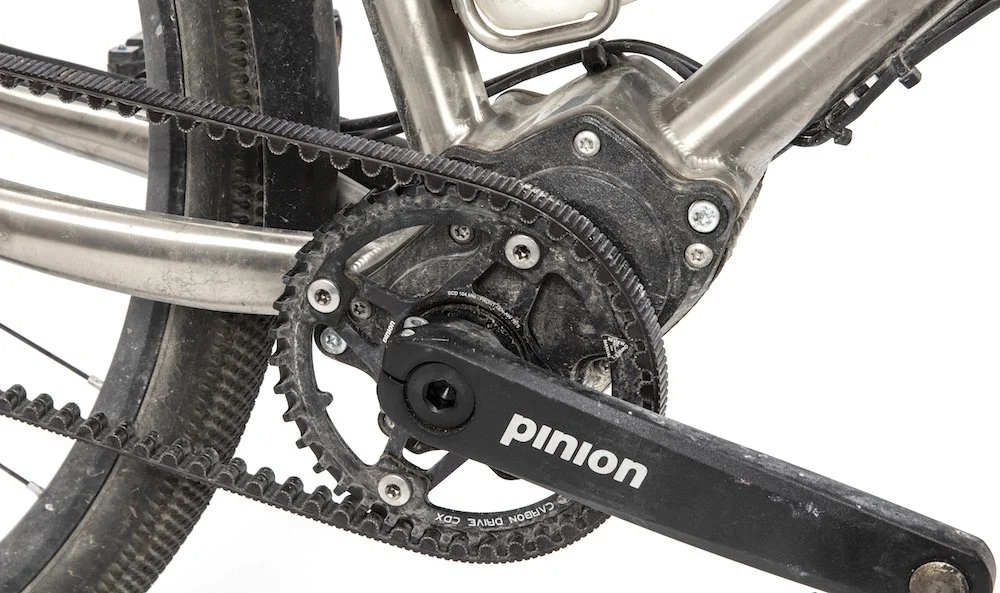Benefits of Belt Drive
So, maybe you’ve recently taken a trip to your local bike shop and seen a strange bike with a belt instead of a chain, or maybe your coworker has started talking about their new belt-drive commuter. Now you have questions; what is a belt drive bike and is it right for me? Belt-drive bikes have many benefits and are an excellent choice for a number of applications, in particular commuters. As a relatively new technology in the cycling world, belt-drive can be a bit daunting, but with the right information it will be easier to understand what to keep in mind and help decide if you should make your next bike a belt-drive bike.
Most simply, a belt-drive bike is a bicycle where the more typical chain driven system is replaced with a toothed belt, similar to a timing belt found in a lot of cars. The belts are usually made of rubber or polyurethane, with an embedded cord for strength. Unlike a chain, they require no oil or lubricant to maintain their performance. Since the belts don’t work with a typical derailleur system found on most chain driven bikes, they are either single speed or require an internal geared hub to provide different speeds.
The most obvious benefit of a belt is cleanliness. Since they don’t require lubricant, they are much easier to keep clean and free of dirt. They also won’t stain your pant legs like chain bikes do, which is great for those commuting to work. They are also much smoother and quieter than a chain. The rubber teeth provide sound insulation unlike the clunking metal on metal of a chain, and single speed or internal geared hubs are much quieter than a derailleur system.
Belt drive systems are also much more durable than a chain. Unlike a chain that stretches out and needs replaced every 2,000-3,000 miles, a belt will last far longer, sometimes upwards of 20,000 miles! Belts are much stronger than a bicycle chain, and unless a belt is extremely worn or was handled incorrectly, breaking one is very rare. They require much less maintenance overall; the most important thing is to keep it clean with a simple rinse of water or light soap. This also makes belt drives a fantastic choice for commuters or long distance tourers, as less maintenance means more trouble-free miles.
Although there are many benefits to a belt drive system, there are also a few drawbacks to keep in mind. One of the biggest downsides is the higher upfront cost that comes with switching to belt-drive. The belts themselves are more expensive than chains, and if you want multiple speeds, an internal hub is more expensive than most derailleur style systems. To switch to belt drive you also need a frame with a break that allows for a belt installation, which means you’d need to have your existing frame modified or purchase a frame specifically designed for belt-drive compatibility.
Since belt-drive systems are less common, this also means that parts may not be as widely available as parts for chain-driven systems. Although belt-drive bikes require less maintenance, if you do run into issues it may be difficult to find parts for repair at your local bike shops. Some shops may also not be knowledgeable on belt-drive repair or have the proper tools on hand, so you’d need to make sure to find a local mechanic that is skilled in belt systems.
Overall, a belt drive bike is a great option for those looking for a durable, low maintenance drive system. Though the cost is a bit more significant up front, the durability and performance provided by a belt system can be a fantastic long term value for high mileage riders. If you’re a commuter, tourer, or just want a simple, durable drivetrain, consider making your next bike a belt drive!
